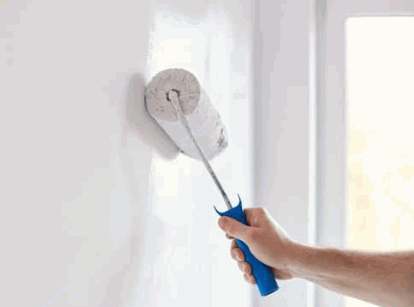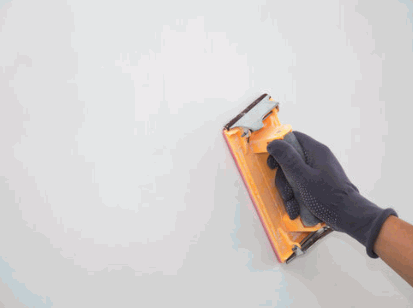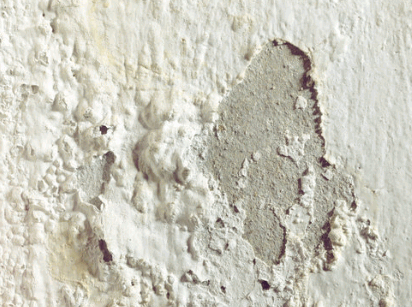Damp proofing your home is an essential task, bringing short and long-term benefits to your home. Damp proofing is a smart move, but generally, a lot of damp proofing solutions are not the most aesthetically pleasing.
In your home, most people look to combine functionality with a sense of style, and this is why a lot of homeowners are keen to decorate on top of their damp proof layer.
At DryCore, we understand you want to enjoy the best of both worlds, benefitting from damp proof solutions while having a home you love. This is why we have the answers and tips you need when considering painting over a damp proof solution at home.
The good news is that it is possible to paint over damp proof paint without diminishing the effectiveness of the paint.
Most damp proof paints represent a one-coat solution, with this first coat serving as the damp proof layer at home. Manufacturers expect users to add one or more layers to this paint, and it does so without compromising the damp proofing capabilities.
When you consider a significant amount of damp proof paint comes in white, it is natural for people to paint over it.
Our post "What Is Damp Proofing" maybe interest you. You can check it out.

Painting over damp proof paint isn't as simple as just applying any type of paint on top of it. There are a few things you need to consider before starting:
You know unwanted moisture and a damp surface cause many problems at home, and it can lead to damp air and mould growth. Waterproof, anti-condensation paint or anti mould paint are great tools and waterproof paints create a more suitable environment but anti mould paint by itself won't help as much as a damp proof course will. For more learnings, you can check out our post "What Is A Damp Proof Course".
As emulsion is a water-based paint, and a very common option when you consider the range of suitable house paints, many people opt for this style of paint when adding a layer or two to a level of your wall.
If your paint has been in place for some time, you can apply a new coat at any time. However, if you are undertaking a refurbishment or renovation project, you will likely add an additional coat over the first layer consecutively.

This is why it is important to know how long you should wait before applying the fresh coat. Always check the manufacturer guidelines, but generally, allow between four to six hours before applying the next coat.
If you intend to add a further coat to the wall, check the surface is dry, and as before, it is likely you’ll need to wait four to six hours before you can apply a further coat of paint.
Incompatibility Of Paint Types: The paint you're applying needs to be compatible with the damp proof paint. If it isn't, you may experience issues with adhesion and longevity.
Insufficient Surface Preparation: The surface should be clean, dry, and lightly sanded to ensure the new paint can adhere properly. If it's not well-prepared, the paint might peel or flake.
Trapped Moisture: Damp proof paint is breathable, allowing moisture to escape from the wall. If you use a non-breathable paint over the top, you could trap moisture, which could lead to blistering, peeling, or other structural issues over time.
Application Issues: If the paint is applied too thickly, or without allowing sufficient drying time between coats, you may encounter problems like drips, bubbling paint, runs, or a failure to dry properly.
Painting In Inappropriate Conditions: High humidity, poor ventilation, very low or high temperatures, or painting in direct sunlight can all affect the drying process and the final finish.
Ignoring A Potential Damp Problem: If the damp proof paint is failing, this could be a sign of a deeper damp issue in your home that needs to be addressed before repainting.
If you are comfortable with painting a wall, painting over a damp proof section isn’t going to pose many problems. However, we know many people want to feel as confident as possible, so here is a step-by-step guide to this DIY project.

Clear The Room: Move furniture away from the wall and cover it with drop cloths. Also, cover the floor to protect against paint splatters.
Tape-Off Areas: Use masking tape to protect areas you don't want to paint, like baseboards, mouldings, and window frames.
Clean The Surface: Make sure the wall is clean and free of dust, dirt, and grease.
Lightly sand the wall with a fine-grit sandpaper. This helps the new paint adhere better to the surface. Make sure you sand evenly across the wall.
After sanding, use a tack cloth to remove any dust on the wall.

When painting over oil-based paint with water-based paint, it's essential to first apply a primer to ensure good adhesion. However, if you're using oil-based paint over oil-based damp-proof paint or water-based paint over water-based, priming may not be needed.
Primers also help hide wall stains, giving a neutral base for new paint.
Stir the paint well before using it. Pour some paint into a clean paint tray. Dip your brush or roller into the paint, then remove the excess.
Start at the top of the wall and work your way down. Use vertical strokes for the main part of the wall and horizontal strokes for corners and edges. Make sure the paint is applied evenly. Wait for the first coat to dry. Check the drying time on the paint can for guidance.
Once the first coat is completely dry, apply a second coat of paint. This will ensure an even, robust finish. If you intend to add additional coat(s), wait for it to dry and then do so.
Following these steps to apply waterproof paints stops damp on indoor walls and limits excess moisture while ensuring your property looks great.

Penetrating damp is caused by water leaking through walls. This is usually the result of structural problems, such as faulty guttering or roofing, or cracks in the walls, which can allow water to penetrate into the interior.
Over time, this can cause serious damage to your wall, and damp walls damage your health.
If penetrating damp is present, you should absolutely not paint over it with damp-proof paint or any other type of paint. Painting over it will merely hide the problem, not resolve it or remove excess moisture.
Eventually, the moisture will likely lead to a bigger damp problem, causing damp patches, a damp seal, flaking paint, and structural damage.

The same is true for rising damp and waterproof paint is a tool to combat problems like rising damp, not something that will cure it by itself.
You want to eliminate damp from interior and exterior walls before you paint because if you don't, there will be further damp issues.
Knowing you can care for your home while ensuring it looks great is a great joy for homeowners. At DryCore, we want to ensure you love your property, and we’re always on hand to support you with managing and minimising dampness, including the use of damp proof paints.
While you're here, take a look at our post "How Soon Can You Plaster After Damp Proofing" for more additional information.